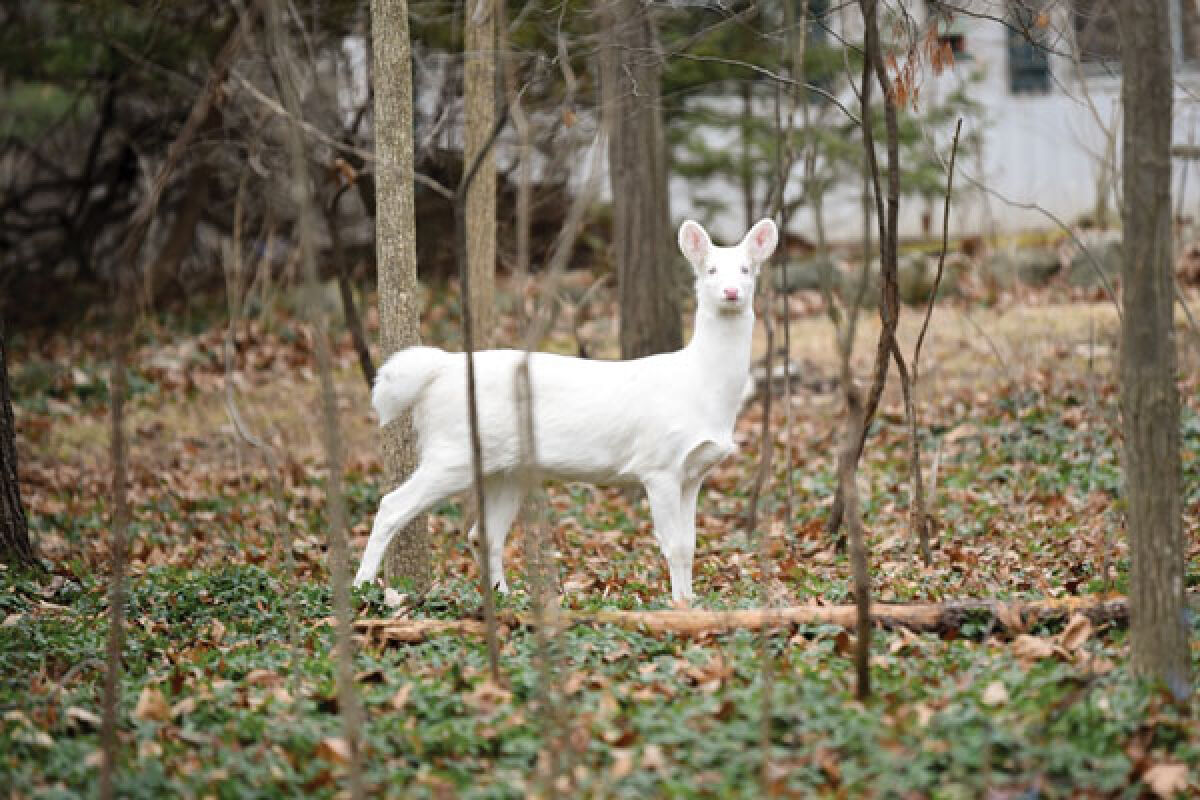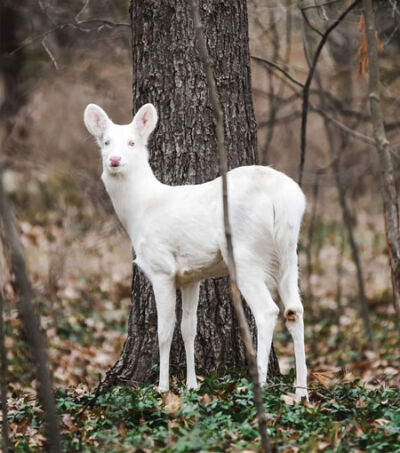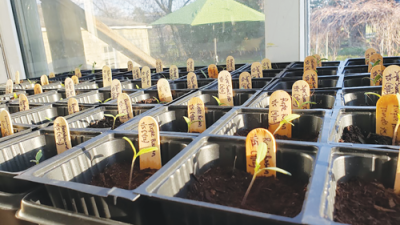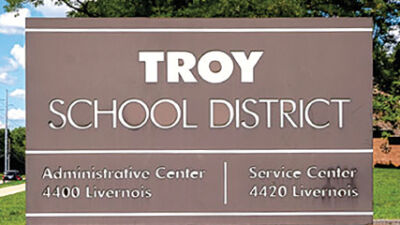TROY — Many Troy residents have been seeing an unusual creature in their neighborhoods over the last several months.
An albino deer has been repeatedly seen by residents in northwest Troy.
On Jan. 11, Troy resident Lindsey Larivee managed to take several photos of the animal as it wandered through her neighborhood.
“She apparently lives in between the three neighborhoods in Troy. My friends have seen her several times,” said Larivee. “I always missed her until a couple weeks ago, and when I saw her, I ran home and got my camera and snagged some shots.”
Larivee didn’t want to publish the deer’s exact location for fear that someone might try to hunt it. The deer has become a sort of beloved mascot for neighborhood residents in recent weeks as sightings of it have increased.
“It’s special to have an albino deer here, so I thought it would be fun to share,” Larivee remarked. “We’ve seen her several times in the last year or so. Albino deer generally live shorter lives because they’re more vulnerable to predators. A friend of mine calls her ‘Snowy,’ and I think seeing her brings a lot of joy to people.”
A photographer, Larivee said she was lucky to be able to get photos as clear and close as the ones she managed to capture.
“I’m part of a photography group,” she said. “I got the photos on Jan. 11. I spotted her with some other deer on my way home from the grocery store. I stomped through the woods to try and snag a shot.”
Debra Williams, the lead naturalist at the Stage Nature Center in Troy, said that albinism in deer is extremely uncommon, and it is a rare chance to see one regularly, as the residents of Troy have.
“It’s very, very rare in deer. It’s about one in 30,000 deer is born an albino,” explained Williams. “They often don’t live a long time since it is hard for them to camouflage with that white color, and they usually have poor eyesight. In order to get an albino deer, both parents have to have the recessive gene for albinism.”
Albinism is a condition in both human beings and animals that results from a lack of pigment in their body, resulting in traits such as white hair, pale skin, and red or pink eyes.
“An albino deer has no pigmentation,” Williams said. “It has the pink eyes and nose because the blood vessels are showing. The lack of pigment is what makes the fur and everything else white. Their hooves are even a white color. … They can often have other deformities, such as an arched spine or shorter legs. Not always, but it is common to have some other physical deformities in albinism.”
Williams added that other unusual color patterns can also sometimes be spotted in animals.
People also can see a deer that is leucistic, which is an animal that lacks pigment over some part of their body. It might look completely white but still have a nose and dark eyes like a piebald deer, which are also leucistic, but they are more spotted over their bodies. They are both more common than albino deer, she said. “Another strange color pattern in deer is melanistic, where it has very dark fur. Gray squirrels that look black are the same thing that you can see in our area. You can see deer like that even less often. One in 500,000 are melanistic.”
Williams said that while the Stage Nature Center has encountered local animals with albinism in the past, this is the first time she is aware of that a deer with such a condition has been spotted.
“We’ve had people ask us questions about the albino deer that has been spotted lately,” she said. “It is very uncommon. I’m sure we have encountered other animals at the Stage Nature Center with albinism. No deer that I am aware of, though.”
 Publication select ▼
Publication select ▼

























